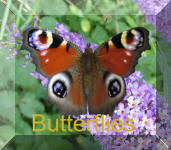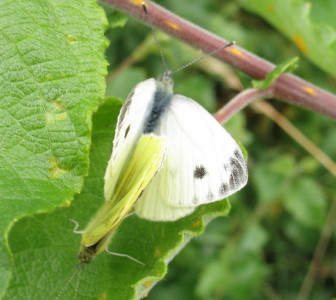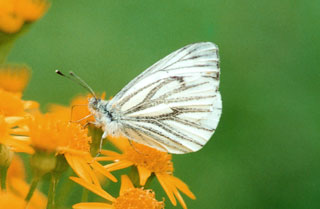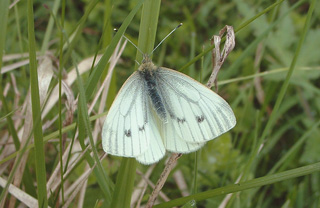Behavior and life history
The Green-veined White is generally not so far
ranging as the Large and Small Whites and tends to form loose colonies
around suitable breeding sites. It is not a very powerful flier and is
less likely to be seen flying across open spaces. This species hibernates
as a chrysalis in dense vegetation from which the first brood emerges in
late April to early May when the first eggs are laid. The caterpillars
are around for most of May and June before they pupate. Within a couple
of weeks, the second brood adult generation appears from the beginning
of July onwards. Their offspring develop into chrysalises during the second
half of September. The caterpillars feed on a number of plants in the cabbage
family (Brassicaceae) including Ladys Smock (Cardamine pratensis), Garlic
Mustard (Alliaria petiolata) and Water Cress (Rorippa nasturtium-aquaticum).
Where to look for it
The Green-veined White is a butterfly of woodland
glades, rides and edges as well as damper, rather neglected meadows, hedgerows
and scrubby areas. It is also a common garden visitor.
Distribution and status
Very common and widely distributed throughout
the city.
When to look for it
Adults can be seen at any time between early April
and late September with numbers peaking in May and early June for the first
brood and late July and August for the second brood
Similar species
The Green-veined White is unmistakeable when it
has its wings closed on account of the dark veining on the under-wings.




